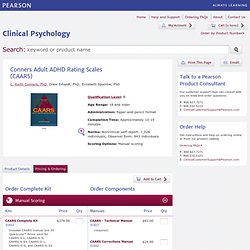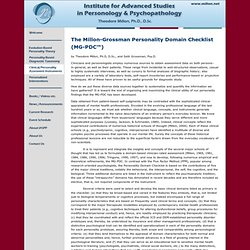

Neuropsychology, ADHD, Reading Fluency, Comprehension, Psychiatry, Behavioral Sciences. The Effects of ADHD (Beyond Decoding Accuracy) on Reading Fluency and Comprehension Dr.

E. Mark Mahone, Ph.D., ABPPDirector of Neuropsychology at the Kennedy Krieger Institute, Baltimore, MarylandAssociate Professor of Psychiatry and Behavioral Sciences, Johns Hopkins University School of Medicine ADHD, Reading, and the Fourth Grade Shift It has long been observed that learning disorders, especially reading difficulties, occur in combination with Attention-deficit/Hyperactivity Disorder (ADHD). A major shift occurs around third or fourth grade from “learning to read” to “reading to learn” (Bernstein &Waber, 1991). ADHD and Processing Speed Reading ability, including fluency, is linked to processing speed, or the ability to rapidly and efficiently respond to basic stimuli (Rucklidge & Tannock, 2002). ADHD, Motor Skill, and Speed Many teachers report that children with ADHD, particularly boys, can be clumsy or have poor handwriting. Processing Speed and Reading Fluency. Brown ADD Rating Scales and Diagnostic Forms for Assessing ADHD and Related Problems.
Dr.

Brown has developed and published assessment tools to help assess executive function impairments associated with ADD/ADHD and related problems. These tools are designed for easy use by psychologists, physicians, psychiatrists, school psychologists and other educational, medical or mental health professionals. His rating scales, normed for each age group across the lifespan, elicit valuable data about executive function impairments for persons aged 3 years through adult. The scales are useful for: screening individuals who might benefit from assessment for ADD/ADHDas one component of a comprehensive assessment of persons for possible ADD/ADHDfor monitoring effectiveness of ongoing treatment for ADD/ADHD These scales are widely used by schools and clinicians in paper and pencil or clinical interview format; they have also been utilized in research for many clinical trials of ADHD medications.
Brown Attention Deficit Disorder Scales (BADDS) The Brown ADD Scales are based on Dr. Product - Conners Adult ADHD Rating Scales (CAARS) Multiple perspectives help provide a well-rounded view of ADHD.

Based on the same clinical expertise, research skills, and theoretical knowledge used to develop the Conners' Rating Scales-Revised for children and adolescents, the CAARS has been designed to help assess, diagnose, and monitor treatment of ADHD in adults. Two formats are included for self-report ratings and observer ratings. Both the self-report and observer forms provide multimodal assessments of the same behaviors and problems, and contain an identical set of scales, subscales, and indexes. CAARS forms are available in long, short, and screening versions. A new user's guide enables the instrument to be used effectively with correctional populations as well.
Forms and Reports Two formats are included for self-report ratings and observer ratings. Long Version Inattention/Memory ProblemsImpulsivity/Emotional LabilityHyperactivity/RestlessnessProblems with Self-Concept The long forms also include: Short Versions Norms. Personality Adjective Check List (PACL) By Theodore Millon, Ph.D, D.Sc., and Seth Grossman, Psy.D.

Clinicians and personologists employ numerous sources to obtain assessment data on both persons–in-general, as well as their patients. These range from incidental to well-structured observations, casual to highly systematic interviews, as well as cursory to formal analyses of biographic history; also employed are a variety of laboratory tests, self-report inventories and performance-based or projective techniques. All of these have proven to be useful grounds for diagnostic study. How do we put these diverse data sources together to systematize and quantify the information we have gathered?
It is toward the end of organizing and maximizing the clinical utility of our personality findings that the MG-PDC has been developed. Data obtained from patient-based self-judgments may be contrasted with the sophisticated clinical appraisals of mental health professionals. [top] Directions for Completing the MG-PDC [top] MG-PDC I. Helen's journey through her senses.